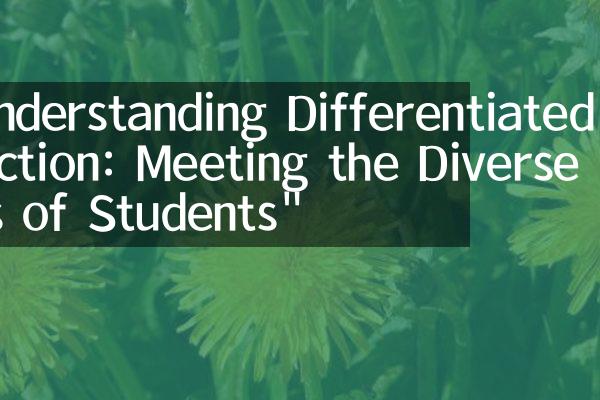Understanding the Difference Between Unsubsidized and Subsidized Student Loans: Which One is Right for You?
When it comes to financing your education, understanding the **difference between unsubsidized and subsidized student loans** is crucial for making informed……
When it comes to financing your education, understanding the **difference between unsubsidized and subsidized student loans** is crucial for making informed decisions. Both types of loans are designed to help students cover the costs of their education, but they have distinct features that can significantly impact your financial future. In this article, we will delve into the key differences between these two loan types, helping you determine which option may be best suited for your needs.
#### What are Subsidized Student Loans?
Subsidized student loans are federal loans offered to undergraduate students who demonstrate financial need. The government pays the interest on these loans while you are enrolled in school at least half-time, during the grace period after graduation, and during any deferment periods. This means that the amount you owe does not increase while you are in school, making subsidized loans an attractive option for many students.
#### What are Unsubsidized Student Loans?

On the other hand, unsubsidized student loans are available to both undergraduate and graduate students, regardless of financial need. Unlike subsidized loans, the borrower is responsible for paying the interest on unsubsidized loans from the moment the loan is disbursed. If you choose not to pay the interest while in school, it will accumulate and be added to the principal amount of the loan, which can lead to a larger debt burden after graduation.
#### Key Differences Between Unsubsidized and Subsidized Student Loans
1. **Interest Accumulation**: The most significant **difference between unsubsidized and subsidized student loans** lies in how interest is handled. With subsidized loans, the government covers the interest while you are in school, whereas with unsubsidized loans, you are responsible for all interest payments from the start.
2. **Eligibility Requirements**: Subsidized loans are based on financial need, meaning you must complete the FAFSA (Free Application for Federal Student Aid) and demonstrate that your family's financial situation qualifies you for assistance. Unsubsidized loans, however, do not require a demonstration of financial need, making them accessible to a broader range of students.

3. **Loan Limits**: There are also differences in the amount you can borrow. Subsidized loans generally have lower borrowing limits compared to unsubsidized loans. This can be a crucial factor for students who need to finance a larger portion of their education.
4. **Repayment Terms**: Both types of loans have similar repayment terms and options, including income-driven repayment plans and loan forgiveness programs. However, the overall amount you repay may differ significantly due to the interest accumulation on unsubsidized loans.
#### Which Loan is Right for You?
Choosing between subsidized and unsubsidized student loans depends on your financial situation and educational goals. If you qualify for subsidized loans, they are usually the better option due to the government covering interest costs during your studies. However, if you do not demonstrate financial need or if you need to borrow more than the subsidized loan limits allow, unsubsidized loans may be necessary.

In conclusion, understanding the **difference between unsubsidized and subsidized student loans** is essential for any student navigating the complexities of financial aid. By considering your financial needs, eligibility, and long-term repayment implications, you can make a more informed decision about which loan type will best support your educational journey. Remember, taking the time to research and understand your options can lead to significant savings and a more manageable financial future.